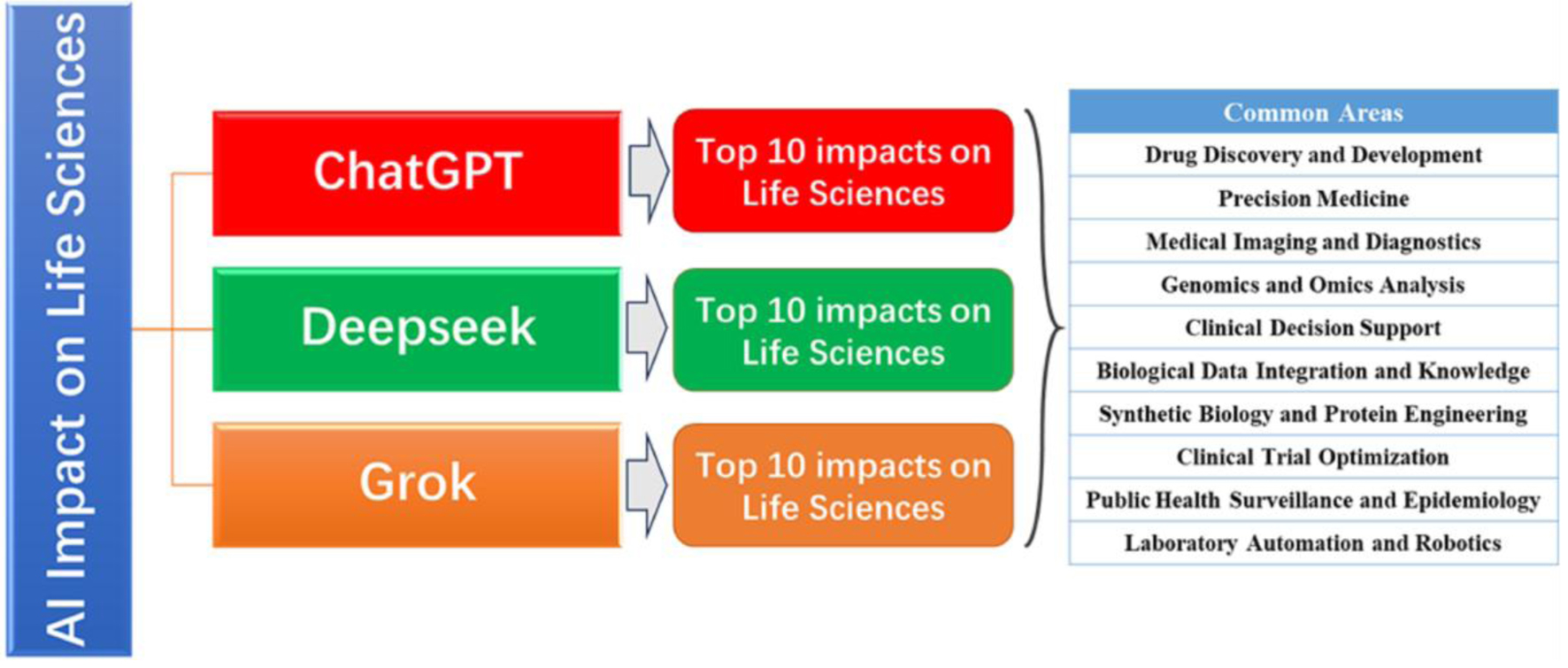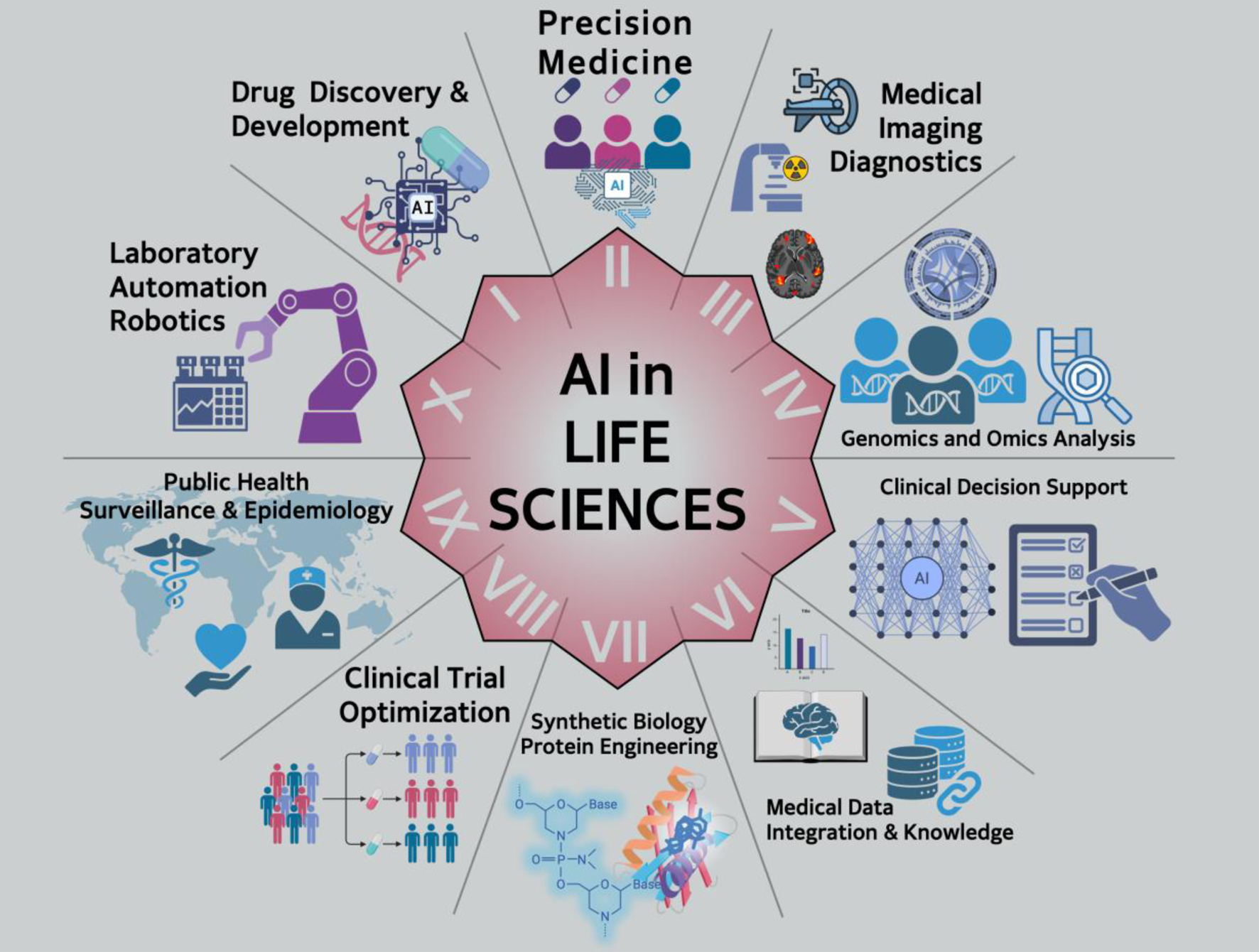| Drug discovery | Accelerates identification of drug candidates and repurposing existing drugs. |
| Genomics and precision medicine | Analyzes genetic data to tailor treatments and predict disease risks. |
| Medical imaging and diagnostics | Enhances accuracy in detecting tumors, neurological disorders, etc. |
| Biomarker discovery | Identifies novel biomarkers for diseases using large datasets. |
| Clinical trials optimization | Improves patient recruitment, trial design, and real-time monitoring. |
| Synthetic biology | Designs novel enzymes, metabolic pathways, or organisms for biotech. |
| Antibiotic resistance | Discovers new antibiotics or combats resistant pathogens. |
| Aging and longevity research | Analyzes aging mechanisms and identifies anti-aging interventions. |
| Public health surveillance | Tracks outbreaks and models disease spread (e.g., pandemics). |
| Lab automation | Robots + AI automate repetitive lab tasks (pipetting, cell culture). |
| Impact area | How AI transforms life sciences, DeepSeek (D) |
| Drug discovery | Accelerates molecule screening, predicts drug efficacy, and repurposes existing drugs. |
| Precision medicine | Tailors treatments using genomics, biomarkers, and patient-specific data. |
| Medical imaging analysis | Enhances radiology/pathology diagnostics (e.g., tumors, neurological disorders). |
| Clinical trial optimization | Improves patient recruitment, predicts trial outcomes, and reduces costs. |
| Biomarker discovery | Identifies disease signatures for early diagnosis and targeted therapies. |
| Synthetic biology | Designs novel enzymes, genetic circuits, and bio-manufacturing pathways. |
| Public health surveillance | Tracks outbreaks, models disease spread, and optimizes interventions. |
| Lab automation | Automates high-throughput screening, data analysis, and robotic experiments. |
| Antibiotic resistance | Discovers new antibiotics and optimizes combinations against superbugs. |
| Gene editing and CRISPR | Improves precision in gene-editing tools (e.g., CRISPR) for therapeutic applications. |
| Impact area | How AI transforms life sciences, Grok (G) |
| Drug discovery acceleration | AI models predict molecular interactions, identify drug candidates, and optimize compounds, accelerating discovery time. |
| Personalized medicine | AI analyzes genomic and patient data to tailor treatments, improving outcomes for diseases like cancer through precision therapies. |
| Medical imaging analysis | AI enhances diagnostic accuracy by detecting patterns in X-rays, MRIs, and CT scans, identifying conditions earlier. |
| Genomics and gene editing | AI processes vast genomic datasets to identify disease-related genes and guide CRISPR-based therapies for genetic disorders. |
| Clinical trial optimization | AI predicts patient eligibility, monitors trials in real-time, and reduces dropout rates, making trials faster and more cost-effective. |
| Disease prediction and prevention | Machine learning models analyze health records and lifestyle data to predict risks for diseases, enabling proactive interventions. |
| Biomarker discovery | AI identifies novel biomarkers for early disease detection, improving diagnostics for conditions like cancers. |
| Synthetic biology | AI designs synthetic organisms or pathways for producing biofuels, drugs, or sustainable materials in biotechnology applications. |
| Healthcare workflow automation | AI streamlines administrative tasks, such as medical coding or patient scheduling, allowing clinicians to focus on care delivery. |
| Epidemiology and public health | AI models track disease outbreaks, predict spread (e.g., COVID-19), and optimize vaccine distribution strategies using real-time data. |

